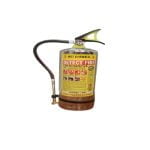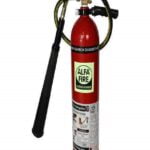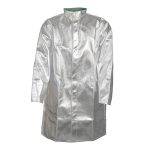Your list is empty, add products to the list to send a request
What Is a Multi-Purpose Detector?

03
May
In today’s rapidly evolving safety landscape, ensuring the protection of both buildings and their occupants is paramount. Multi-purpose detectors have emerged as indispensable tools in this mission, offering versatile solutions for detecting various hazards. This comprehensive guide delves into the intricacies of multi-purpose detectors, their functionalities, and their pivotal role in enhancing safety measures.
Understanding Multi-Purpose Detectors
What Are Multi-Purpose Detectors?
Multi-purpose detectors, often referred to as multi-sensor or multi-criteria detectors, are advanced devices designed to identify multiple indicators of fire or hazardous gases within a single unit. By integrating various sensing technologies, these detectors provide a more comprehensive and accurate detection mechanism compared to single-sensor devices.f
How Do They Work?
These detectors operate by simultaneously monitoring different environmental parameters:
- Smoke Detection: Utilizing optical or ionization sensors to identify smoke particles.
- Heat Detection: Measuring temperature changes to detect unusual heat levels.
- Gas Detection: Sensing the presence of hazardous gases like carbon monoxide (CO), methane (CH₄), or hydrogen sulfide (H₂S).
By analyzing data from these multiple sensors, the detector can differentiate between actual threats and false alarms, ensuring timely and accurate alerts.
Advantages of Multi-Purpose Detectors
Enhanced Accuracy
Combining multiple sensing technologies reduces the likelihood of false alarms, ensuring that alerts are triggered only when genuine threats are detected.
Comprehensive Coverage
A single multi-purpose detector can monitor various hazards, eliminating the need for multiple individual detectors and simplifying installation and maintenance.
Cost-Effective
While the initial investment might be higher, the consolidated functionality leads to savings in equipment, installation, and upkeep over time.
Versatility
Suitable for a wide range of environments, from residential buildings to industrial facilities, these detectors adapt to diverse safety requirements.
Applications Across Industries
Residential Buildings
In homes and apartments, multi-purpose detectors provide comprehensive protection against common household hazards, ensuring the safety of occupants.
Commercial Establishments
Offices, malls, and other commercial spaces benefit from the broad detection capabilities, safeguarding both property and people.
Industrial Facilities
Factories and plants, where the risk of gas leaks and fires is higher, rely on these detectors for early hazard identification and prevention.
Healthcare Institutions
Hospitals and clinics require stringent safety measures; multi-purpose detectors help maintain a safe environment for patients and staff.
Key Features to Consider
When selecting a multi-purpose detector, consider the following features:
- Sensor Sensitivity: Ensure the detector can accurately identify low levels of smoke, heat, or gases.
- Alarm Systems: Look for devices with audible and visual alarms for immediate notification.
- Connectivity: Advanced detectors offer integration with building management systems for centralized monitoring.
- Power Backup: Battery backups ensure functionality during power outages.
- Compliance: Verify that the detector meets local and international safety standards.
Maintenance and Best Practices
- Regular Testing: Test detectors monthly to ensure they function correctly.
- Scheduled Maintenance: Follow manufacturer guidelines for periodic maintenance and sensor calibration.
- Prompt Replacement: Replace detectors as recommended, typically every 5-10 years, depending on the device.
- Clean Environment: Keep detectors free from dust and debris, which can affect sensor accuracy.
Frequently Asked Questions:
1. What is a multi detector used for?
A: A multi detector is designed to identify various hazards such as smoke, heat, and gases within a single device. It provides comprehensive monitoring, ensuring timely alerts in case of emergencies.
2. What is the purpose of a multi gas detector?
3. How many types of detectors are there?
A: There are several types of detectors, including:
Smoke Detectors: Ionization and photoelectric types.
Heat Detectors: Fixed temperature and rate-of-rise detectors.
Gas Detectors: Detect specific gases like CO, CH₄, or H₂S.
Flame Detectors: Ultraviolet (UV), infrared (IR), and combined UV/IR detectors.
Multi-Purpose Detectors: Combine multiple sensing technologies in one device.
Conclusion
Multi-purpose detectors represent a significant advancement in safety technology, offering comprehensive monitoring and early detection of various hazards. Their integration into safety systems across residential, commercial, and industrial settings enhances protection and ensures timely responses to potential threats.
For those seeking reliable and advanced multi-purpose detectors, consider exploring the Simplex Multi-Sensor Detector with Base, available at Firesupplies. This device exemplifies the integration of cutting-edge technology in ensuring safety and compliance.
Ensure the safety of your premises today. Visit Firesupplies to explore our range of high-quality fire and gas detection solutions tailored to meet your specific needs



























